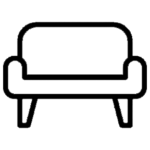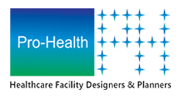Blog
How to Set Up an Ergonomic Workspace for Software Developers

Software developers spend long hours coding, debugging, and solving complex problems. Sitting for extended periods in a poorly designed workspace can lead to discomfort, fatigue, and long-term health issues. An ergonomic office setup ensures that developers can work efficiently without straining their bodies. The right workspace furniture and ergonomic furniture and infrastructure can enhance productivity and overall well-being.
Why an Ergonomic Workspace is Essential for Software Developers
Developers often experience back pain, wrist strain, and eye fatigue due to long hours of screen time and poor posture. An ergonomic workspace helps in:
- Reducing the risk of musculoskeletal disorders.
- Improving focus and efficiency.
- Preventing repetitive stress injuries.
- Enhancing overall comfort and job satisfaction.
A well-designed office setup not only supports physical health but also boosts mental clarity, allowing developers to perform their best work.
Key Elements of an Ergonomic Office Setup
Creating an ergonomic workspace requires attention to several factors, including seating, desk setup, monitor placement, and lighting. Below are the essential components of an ergonomic office:
1. Ergonomic Office Chair
A high-quality ergonomic chair is the foundation of a comfortable workspace. The best chairs for developers should have:
- Adjustable Height: Allows the user to keep their feet flat on the floor and their knees at a 90-degree angle.
- Lumbar Support: Supports the natural curve of the lower back and prevents slouching.
- Seat Cushioning: A thick, comfortable cushion reduces pressure on the hips and thighs.
- Armrests: Adjustable armrests help in reducing shoulder strain.
- Reclining and Swivel Features: These features provide flexibility and comfort during long coding sessions.
2. Adjustable Desk for Better Posture
A desk that is too high or too low can cause discomfort. An adjustable desk allows software developers to switch between sitting and standing, promoting better posture. Features to consider:
- Height Adjustability: Ensures the monitor is at eye level and hands are in a natural typing position.
- Spacious Surface: Provides enough room for multiple monitors, a keyboard, and other essentials.
- Cable Management System: Keeps cords organized and prevents clutter.
3. Monitor Placement for Reduced Eye Strain
Proper monitor placement helps reduce neck strain and eye fatigue. Consider these guidelines:
- Eye-Level Positioning: The top of the screen should be at or just below eye level.
- Screen Distance: Keep the monitor at an arm’s length (about 20-30 inches away).
- Anti-Glare Screen: Reduces eye strain and minimizes reflections from overhead lights.
- Dual Monitor Setup: If using two screens, place them at the same height and distance for easy switching.
Essential Workspace Furniture for Developers
Beyond the chair and desk, other furniture pieces contribute to an efficient workspace.
1. Ergonomic Keyboard and Mouse
Typing for long hours can strain the wrists and hands. Investing in an ergonomic keyboard and mouse prevents issues like carpal tunnel syndrome.
- Split Keyboard Design: Encourages a natural hand position.
- Wrist Rest Support: Reduces strain on wrists.
- Lightweight, Responsive Mouse: Ensures smooth movements and reduces finger fatigue.
2. Footrest for Proper Leg Support
A footrest improves circulation and reduces lower back strain by keeping feet in a comfortable position.
- Height-Adjustable: Accommodates different seating positions.
- Anti-Slip Surface: Prevents movement and provides stability.
3. Storage Solutions for a Clutter-Free Workspace
A well-organized workspace helps developers stay focused. Consider adding:
- Filing Cabinets: Store important documents and accessories.
- Floating Shelves: Utilize vertical space for books and supplies.
- Drawer Organizers: Keep office essentials within easy reach.
Ergonomic Furniture and Infrastructure for a Healthy Workspace
In addition to seating and desks, the overall office environment plays a crucial role in workplace comfort and efficiency.
1. Proper Lighting for Eye Comfort
- Natural Light: Position the desk near a window for natural light exposure.
- Adjustable Desk Lamp: Provides direct lighting and reduces screen glare.
- Warm LED Lights: Minimize blue light exposure and prevent eye strain.
2. Soundproofing for a Quiet Work Environment
Developers need concentration for coding and problem-solving. Soundproofing the workspace helps in reducing distractions.
- Noise-Canceling Headphones: Block out background noise.
- Acoustic Panels: Absorb sound and create a quieter atmosphere.
- Carpets and Curtains: Reduce echo and sound reverberation.
3. Air Quality and Temperature Control
A comfortable office temperature and clean air improve focus and overall well-being.
- Air Purifiers: Remove dust and allergens from the air.
- Ergonomic Fans or Heaters: Maintain a comfortable temperature.
- Proper Ventilation: Ensures fresh airflow and prevents stuffiness.
Tips for Maintaining an Ergonomic Workspace
Setting up an ergonomic workspace is just the first step. Maintaining it requires continuous adjustments and good habits:
- Take Regular Breaks: Stand up and stretch every 30-60 minutes.
- Follow the 20-20-20 Rule: Every 20 minutes, look at something 20 feet away for 20 seconds to reduce eye strain.
- Adjust Chair and Desk as Needed: Small tweaks can enhance comfort.
- Organize the Workspace Weekly: Keep it tidy and free from unnecessary items.
- Use Ergonomic Accessories: Wrist supports, footrests, and back cushions provide extra comfort.
Conclusion
A well-designed ergonomic office setup is essential for software developers who spend long hours at their desks. Investing in the right workspace furniture and ergonomic furniture and infrastructure not only improves comfort but also boosts productivity and prevents health issues. By setting up an adjustable desk, ergonomic chair, proper lighting, and organized storage, developers can create a workspace that enhances efficiency and well-being. Regular maintenance and small adjustments ensure long-term benefits, making the workspace a place of comfort and creativity.












